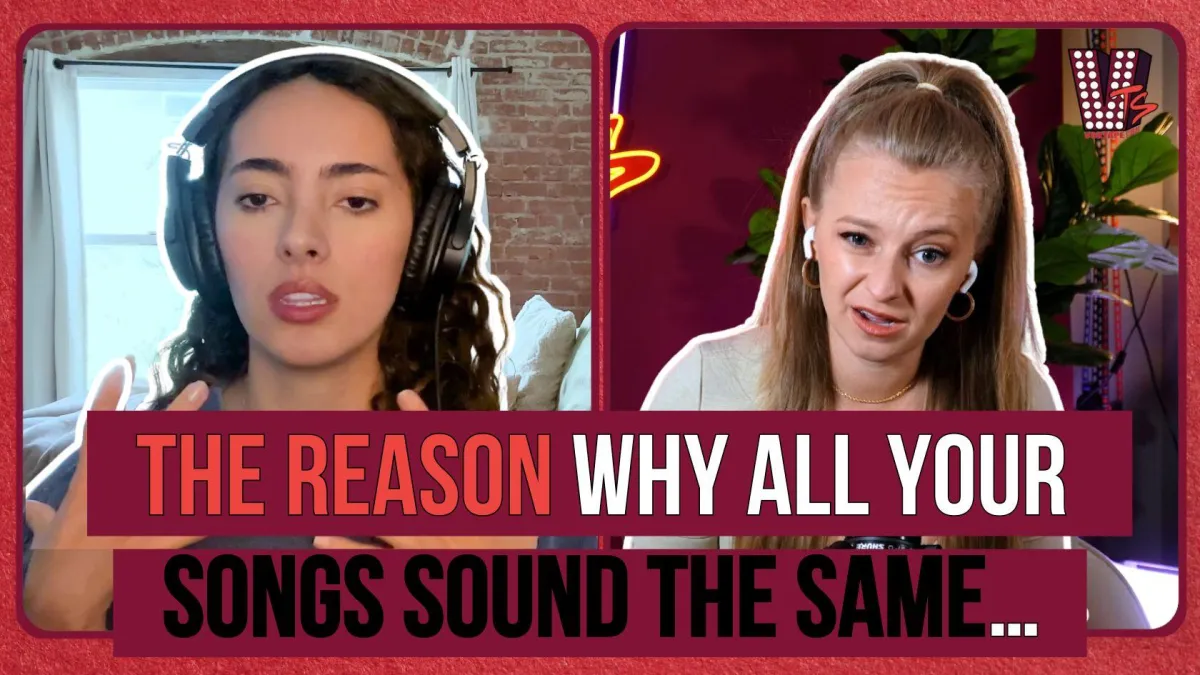
Structure Made Simple: How To Build A Song That Flows
Songwriting is an art from and just like with any art from, there are rules we want to follow to express ourselves in a way the people are ready to receive it. Of course you don’t have to follow every single little rule, but it’s good to know what those rules are before you decide to break them.
Once of those rules is song structure. Song structure is what what takes the listener on a journey and makes sure that not the entire song sounds the same from start to finish.
So let’s break down what song structure is, what the different song sections are and how they usually show up in songs, so that when you’re writing your next song you can follow a similar outline and take your listeners on a journey.
Common Song Sections
There are 4 song sections that show up in almost all songs. Let’s break them down:
Verse: Usually at the beginning of the song, lower in pitch and sets the scene so the listener knows what's happening in the story. Sometimes songs have a double verse in the first verse and only a single verse in the second verse.
Pre-Chorus: between the verse and the chorus to bridge the gap between the two. Usually has a building melody to lead up to the chorus.
Chorus: The part of the song where everyone sings along. Usually higher in pitch and very repetitive to keep it simple. Lyrically it's the summary of the story and usually the lyrics of all the choruses within a song are the same (but there’s always exceptions!).
Bridge: Usually a completely new idea musically and a shift or new angle to the story. The bridge generally only happens once in a song.
You can think of each one of these sections as puzzle pieces that you then fit together to make one song. Here’s usually how they are arranged:
Verse - Pre-Chorus - Chorus - Verse - Pre-Chorus - Chorus - Bridge - Chorus
Songs today are getting shorter and shorter so you will find more songs without a pre-chorus or without a bridge.
I recommend looking at some of your favorite songs and see what song structure they follow and then create a song with that same structure.

Moving Through The Song
Identifying the different song sections in someone else’s song is one thing… But writing a song where people can tell that we’re now in a different song section is another! So here’s the most important thing you need to do to let people know that we’ve moved on to the next section:
Break the pattern.
You can do this in many ways. For example you can change the rhythm or the range of the melody. It doesn’t really matter that much what you do, but you have to let the listener know that we’re in a different place now.
If you don’t do this, your songs will start sounding the same from start to finish. Even if you follow the song sections lyrical rules, but you don’t change anything up melodically, people still won’t know that we’re now in a different song section.
Verse/Refrain Songs
While “chorus songs” make up about 95% of all songs written, there is a second type of song structure called Verse/Refrain songs. You will find this kind of song more often in folk or indie music.
The main characteristic of a verse/refrain song is that there is no chorus - Yes, you head that right! Instead of a chorus you just have 1 line at the end of the verse (sometimes also at the beginning) - called the refrain line - that acts as the chorus. This refrain line usually contains the title of the song.
Looking at “Make You Feel My Love” by Bob Dylan, it’s quite easy to identify the refrain line. It’s at the end of each verse and contains the title of the song: “To make you feel my love”.
Now you might be wondering about that higher section in the song where it goes “I know you haven’t made your mind up yet…”. Is that not the chorus? No, this part is called a bridge. In verse/refrain songs you only have 3 sections: verse, refrain line, bridge. You can also tell that this is a bridge and not a chorus because when it repeats again it has different lyrics.
Melody, Melody, Melody
Songwriters often think about taking listeners on a journey lyrically… Don’t forget to do the same melodically. We need that break in pattern so that we can move through the song without making it sound the same from start to finish. But we do want to come back to the patterns we created so that our listeners can remember the song more easily. Remember this for the next song you write.
🎧 Check out the full conversation I had with coach Juliana around song structure here:
Prefer Listening To The Podcast On Your Favorite Platform? Listen Below.


